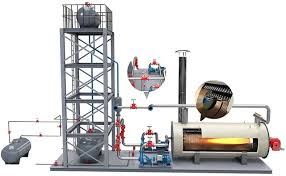
Sep . 24, 2024 12:53 Back to list
Cost Analysis for Replacing Steam Boilers and Its Financial Impact
The Cost of Steam Boiler Replacement A Comprehensive Overview
Replacing a steam boiler is a significant decision that can impact both operational efficiency and budget. With various factors to consider, understanding the costs associated with steam boiler replacement is essential for facility managers and business owners alike.
1. Initial Cost of the Boiler
The first component of the cost is the initial purchase price of the new steam boiler. Prices can range significantly based on the type, size, and efficiency of the boiler. For instance, industrial boilers typically cost more than commercial ones, with prices ranging from $10,000 to over $100,000. High-efficiency models may have a higher upfront cost but can lead to substantial savings on fuel consumption over time.
2. Installation Costs
Installation is another critical factor in the total cost of boiler replacement. Professional installation is necessary to ensure safety and compliance with local regulations. Costs can vary based on the complexity of the installation, the location of the boiler, and whether any modifications to existing systems are needed. On average, installation can add another $5,000 to $20,000 to the total expense.
During the replacement process, facilities may experience downtime, which can affect productivity and revenue. Calculating the potential losses during the period the boiler is out of service is essential. This aspect, often overlooked, can significantly impact the overall cost of replacement.
cost of steam boiler replacement

4. Long-Term Savings
When considering the cost of boiler replacement, it’s crucial to evaluate the long-term savings. Newer models are often more energy-efficient, which means lower fuel costs. Over several years, these savings can offset the initial investment. Additionally, modern boilers require less maintenance and offer improved reliability, reducing future repair costs.
5. Regulatory Compliance
Replacing a steam boiler may also involve compliance with new regulations and standards, particularly regarding emissions. Upgrading to a more environmentally friendly model could necessitate additional expenses, such as modifications to meet regulatory benchmarks. However, this may qualify the facility for incentives or tax breaks, providing a return on investment in the long run.
6. Financing Options
To mitigate the upfront costs, businesses can explore various financing options. Many manufacturers and suppliers offer financing plans that spread the cost over time. This can lessen the immediate financial burden and allow companies to allocate resources more effectively.
In conclusion, while the cost of steam boiler replacement can be substantial, careful consideration of all associated factors—including the purchase price, installation, downtime, long-term savings, compliance, and financing—can lead to a strategically sound decision. By investing in a new steam boiler, businesses not only ensure efficient operations but also pave the way for enhanced safety and sustainability in their facility.
-
High-Efficiency Commercial Oil Fired Steam Boiler for Industry
NewsJul.30,2025
-
High-Efficiency Biomass Fired Thermal Oil Boiler Solutions
NewsJul.30,2025
-
High Efficiency Gas Fired Thermal Oil Boiler for Industrial Heating
NewsJul.29,2025
-
High-Efficiency Gas Fired Hot Water Boiler for Sale – Reliable & Affordable
NewsJul.29,2025
-
High Efficiency Biomass Fired Hot Water Boiler for Industrial and Commercial Use
NewsJul.29,2025
-
High-Efficiency Biomass Fired Hot Water Boiler for Industrial Use
NewsJul.28,2025
Related PRODUCTS






















